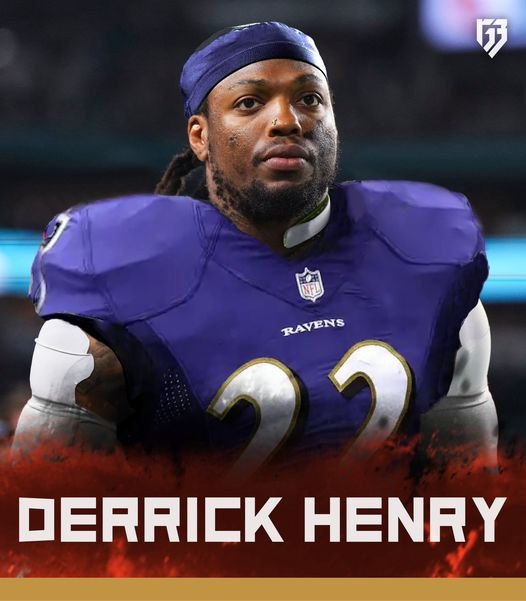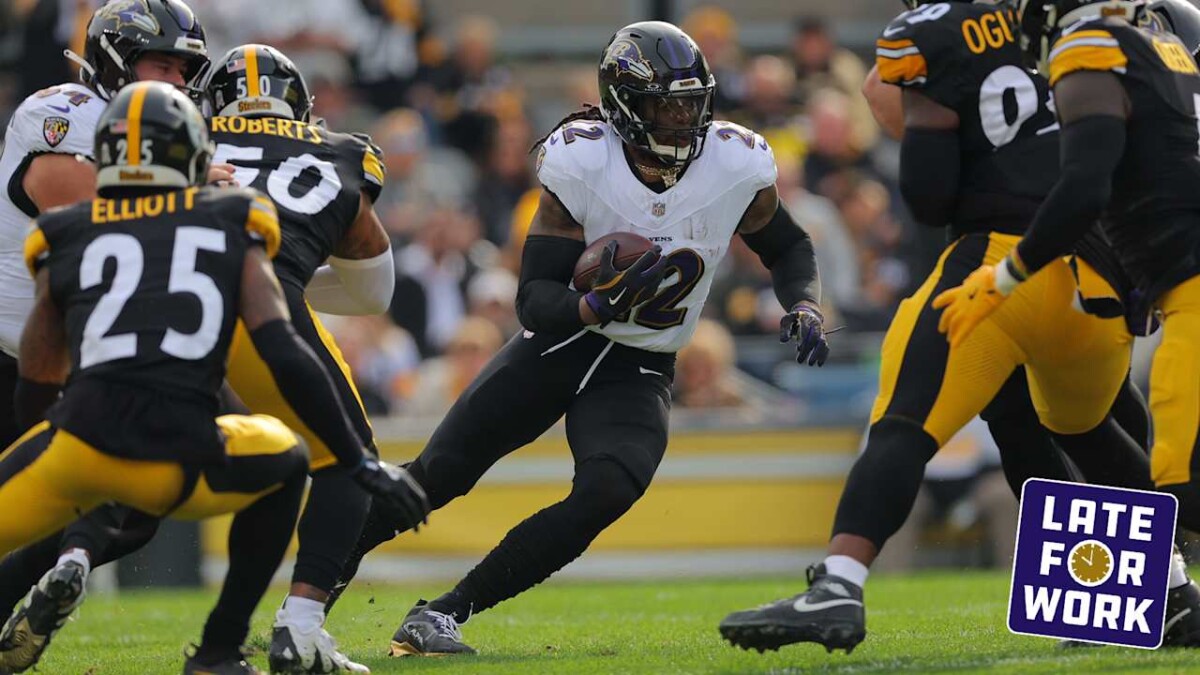Every neutral fan’s favorite move actually happened in NFL free agency: Running back Derrick Henry has reportedly agreed to join the Baltimore Ravens on a two-year contract worth $16 million, with $9 million guaranteed.
That pairs arguably the best running back of the past decade with the best quarterback running threat the game has ever seen, and it presents a nightmare for opposing defenses
Critics will look at the 30-year-old Henry, with all of the miles he has accumulated throughout his NFL career, and determine he is a spent force. His past three seasons have produced declined numbers from his peak, and so this is a better idea than it will be a reality, they’ll say.
That fails to factor in the changes in Henry’s environment in Tennessee leading up to his departure.
The Titans’ offensive line has ranked dead last in PFF’s offensive line rankings in each of the past two seasons. Henry was running behind the worst line in football for two years and still averaged 3.5 yards per carry after contact.

Tennessee’s blocking generated Henry an average of 0.82 yards per carry before contact over the past two seasons, the worst mark in football. We know running backs are, to a huge degree, a product of their circumstances — chief among them is blocking — and nobody has had a worse situation to deal with than Henry.
One could easily argue that Henry is also more dependent on avoiding those early hits because of his play style: a runner who needs to get up to speed but, once he does, is very hard to take down.
At a minimum, Baltimore’s offensive line is a complete sea change for Henry. The unit finished last season ranked fifth in the league, and even with some projected turnover (both guard spots will be new starters at the time of writing), it will be a totally different picture in front of Henry.
But the biggest new variable is the threat of Lamar Jackson, who changes the entire dynamic on defense with every snap.
The Ravens are no longer running the Greg Roman offense built on the very foundation of Jackson’s rushing ability, but he still carried the ball by design 85 times last season, second only to Jalen Hurts, whose numbers are inflated by the Eagles’ cheat-code push play in short-yardage situations.
One of the biggest variables that dictates rushing success is box count, or simply how many defensive bodies are stacked in and around the line of scrimmage that could potentially get in the ball carrier’s way. The threat Jackson poses at all times changes the math and potentially alters run fits altogether from the defensive perspective. All of that creates more space for Henry to attack.
Over the past three years (ostensibly the period of Henry’s decline), Henry has run into an eight-plus-man box 126 times more than any other player in the NFL. He has the highest PFF rushing grade of any back on those plays and has still averaged 4.0 yards per carry, with 3.3 of that coming after contact.
Simply liberating Henry from those looks will immediately transform his box-score production and reveal the old King Henry once again, and Jackson can help achieve that or, at the very minimum, capitalize if teams refuse to adjust. Gus Edwards is a Henry-type running back, and Edwards on the field was very much an indication of Baltimore running the ball last season. He faced the sixth-most eight-plus-man boxes last season, but teams approaching things that way opens space for Jackson either as a ball carrier or in the passing game.
The Ravens now want to pass the ball more than ever before. Once the league’s most run-heavy team, they were down to fifth last season as they tried to spread the ball around more.
Henry will help with that, and that philosophy will also help Henry work from the most favorable backfield he has seen in years.
He has already proved countless times that he is an exception to the conventional wisdom when it comes to the running back position. With the miles on his clock, his advanced age and his running style, Henry should have broken down years ago. But he hasn’t. He has constantly defied the accepted trends of running back play, and there’s no reason he can’t do so again and thrive past the 30-year-old barrier.
Adrian Peterson was arguably the last running back to defy conventional wisdom in a similar way to Henry. At the age of 30, Peterson led the NFL in carries, rushing yards and rushing touchdowns. It wouldn’t be a shock to see Henry repeat that trick nine years later.




